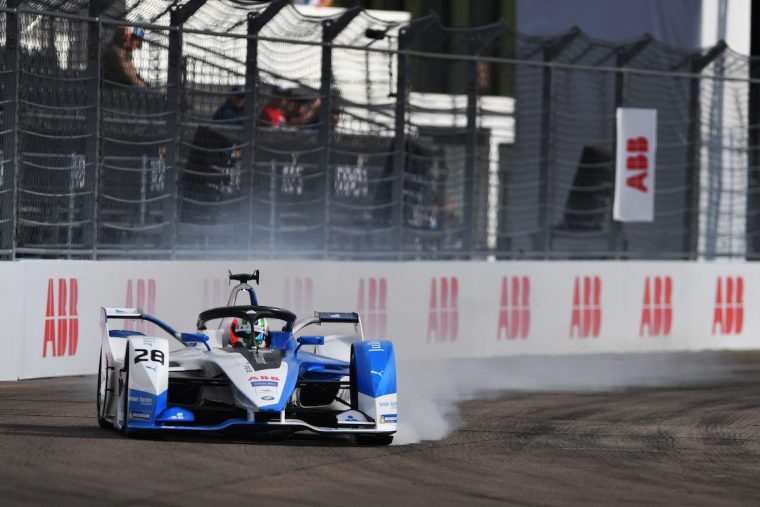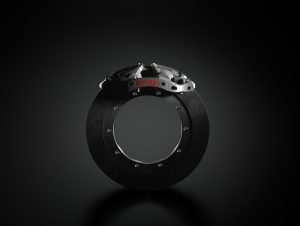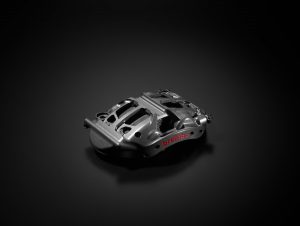Engineer’s POV: Reaching Braking Point – Part 2
They may not always be in the spotlight, but they’re an essential part in determining the performance of a race car. Brembo Formula E and Formula 1 Race Engineer Giovanni Clemente takes us through the intricacies of the Gen 2 braking system.
Perhaps one of the earliest illustrious wins for Brembo in the world of motorsports can be traced back to 1975 when Ferrari won the Formula 1 championship with Niki Lauda in a car that used Brembo-backed braking technology. The Italian manufacturer has had over 40 years of experience in motorsports. Today, they are the sole brake suppliers for the entire ABB FIA Formula E grid.
But with a unique championship comes with it a one-of-a-kind challenge to create a bespoke braking system that could fit the extraordinary demands of a fully-electric single-seater race car and as we are about to find out, comes with plenty of differences compared to the ones used in other series.
“The braking system we developed for Formula E is a traditional one: with discs, calipers, bells, pump and braking fluid. We designed it specifically and only for this electric series,” explains Giovanni Clemente, Brembo Formula E and Formula 1 Race Engineer.
“The challenge here is that it had to be flexible enough to deliver top performance in every single condition (hot or cold, wet or dry, from regen fully ON to regen fully OFF), satisfying both the drivers’ feeling and electronics-based systems (such as the regen),” he adds.
While performance is one aspect, the design of Brembo’s braking system is another feature that sets the Bergamo-based company’s products apart. “The design of the new caliper has been pushed to the limit: it’s been considerably lightened in the less stressed areas in order to maximise weight reduction without compromising its stiffness. This has led to a dynamic and sporty aesthetic identity, in line with the features of the cars that equips.”
Formula E vs Formula 1
When it comes to the aesthetics of the braking systems used in Formula E and Formula 1, you’d be forgiven for not being able to tell the difference. In fact, they look almost similar at first glance, but the comparison lies in tailoring the braking systems to meet the demands of each series.
[perfectpullquote align=”full” bordertop=”false” cite=”” link=”” color=”” class=”” size=””]”Formula E Gen 2 are heavier and, of course, electric; Formula 1 single-seaters are faster, hybrid and race for a longer time.”[/perfectpullquote]
“Each championship has its own specific needs and Brembo strives to develop tailored solutions able to meet such requirements. In the case of Formula E and Formula 1, the main differences are based on the features of the cars. Formula E Gen 2 are heavier and, of course, electric; Formula 1 single-seaters are faster, hybrid and race for a longer time.
Now, also consider the format of Formula E races which are shorter to Formula 1 races, meaning Formula E cars brake less, causing less wear and friction of the discs and pads.
“These elements affect the shape, dimensions and materials we choose for the brakes. Discs are both carbon made, but Formula E ones are thinner (24 mm at the front and 20 mm at the rear vs 32 mm and 28-32 mm of Formula 1).
“The main difference you can see is in the ventilation holes: Formula E have 70 holes at the front and 90 at the rear, while Formula 1 have more than 1.400. This because Formula 1 need to dissipate more heat generated through the braking.
“Both calipers are machined from a single block of aluminum, but Formula E are oxidized, while Formula 1 are nickel-plated. Formula E calipers are lighter, 1 kg only, and with 4 pistons. In Formula 1, where more pressure on the disc is needed, they have 6 pistons and weigh 2 kg. The Formula E brakes work in a 400-800 °C temperature range, while the Formula 1 can go over 1.000 °C.”
Safety first
Meanwhile, safety is obviously a top priority for Brembo where each component goes through a series of severe tests to prove their resistance, reliability and durability.
“These tests simulate conditions that far exceed what could happen in a real race. On top of that, we support the teams advising them on how to set the system in the best way, also directly on the track during the races,” says Clemente.
“We also provide a components inspection service, after the brake parts have raced a specific mileage, we closely inspect and analyse them in order to assess whether they can be further used or not. This happens also after a crash or when we see the brakes have been used differently from their design specifics.”
In turn, these innovations developed on the race track will, down the line be passed down on to the electric road cars of the future.
“Over the years, our experience in motorsport has allowed us to test technological solutions directly on the track. These solutions, after a few years, have been transferred to the road cars and became a reliable benchmark for all our customers. Formula E also follows this path: for us it is a precious laboratory, thanks to which we can study and develop new braking technologies that in the future can be applied to electric street cars.”
Photos courtesy of Brembo.







 No part of this website or any of its contents may be reproduced, copied, modified, adapted, used or distributed without the prior written consent of the author. e-racing.net is not responsible for the content of external sites or links.
No part of this website or any of its contents may be reproduced, copied, modified, adapted, used or distributed without the prior written consent of the author. e-racing.net is not responsible for the content of external sites or links.